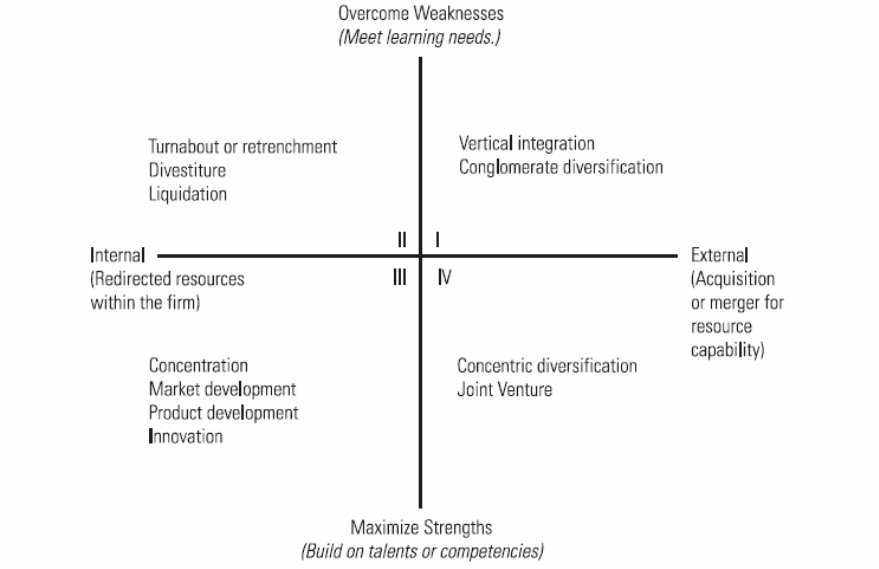Abstract
The paper at hand provides a brief overview of the process of selecting the organizational strategy for talent development. The proposed organizational strategy puts a priority in the needs assessment element as one of the key determinants of the strategy’s efficiency. The selection of the strategy has a multi-stage structure. The summary is accompanied by the illustration of the two matrices – Curriculum Matrix and Grand Strategy Matrix – and the analysis of the solutions that they offer.
Summary of the Process of Selecting the Organizational Strategy for Talent Development
The process of selecting a strategy implied several steps. Hence, the first step was the problem identification. In other words, it was critical to determine whether the gap exists. It was achieved by comparing the present conditions with the expected perspectives (Pruis, 2011). The relevant examination revealed several gaps and, hence, the second step implied formulating problems: the existing strategy did not put a sufficient focus on the development of emotional intelligence and diversity. Also, the problems of staff shortage and productivity were not addressed properly.
Next, it was considered rational to identify the root of the problem as numerous studies proposed (Garavan, Carbery, & Rock, 2012). Hence, the cause of the problems was identified – the gaps existed due to ineffective training management. The next step implied the search for solutions. Two matrices were used as a source of alternatives: Curriculum Matrix and Grand Strategy Matrix. The next stage implied the consideration of potential solutions. The relevant analysis is described below.
Matrix Analysis
Curriculum Matrix
Curriculum matrix (see Figure 2) might be potentially applied to working out the strategy for the training aspect of the talent development approach. Hence, as it was determined through the course of the strategy selection, one of the reasons why the described gaps exist is ineffective training. Therefore, the curriculum matrix can be proposed to line managers to plan the curriculum for the training within their departments.
The matrix implies several solutions. Hence, it might turn out that the employees can perform complicated operations, while their intermediate skills need to be improved. On the contrary, it might turn out that certain job categories possess the relevant intermediate skills while the general quality of their performance needs to be advanced. The identification of the target level of training will determine the character of the training strategy that the organization should adopt.
Grand Strategy Matrix
Grand Strategy Matrix is mainly used to determine whether the organization should put a particular focus on overcoming the current weaknesses or enhancing the existing strengths (Rothwell & Kazanas, 2003). Hence, the Grand Strategy Matrix offers four solutions (see Figure 1). The first solution implies that the organization should focus on overcoming the existing weaknesses and prioritize the internal resources.
In this case, the organization will mainly emphasize such aspects as turnabout, divestiture, and liquidation. The second solution implies the same strategy with the exception that the company shifts the focus to the external resources. In this case, the organization will mainly concentrate on vertical integration and conglomerate diversification. Applying this matrix to the previous organizational analysis, it might be pointed out that the first alternative seems to be the most appropriate considering the weaknesses identified in the process of strategy selection.
The other two solutions can be considered by those organizations that choose to maximize the existing strengths instead of overcoming the weaknesses. These two solutions imply such points of consideration a market development, product development, joint venture, etc.
Diagrams
Grand Strategy Matrix

Curriculum Matrix

Reference List
Garavan, T. N., Carbery, R., & Rock, A. (2012). Mapping talent development: definition, scope and architecture. European Journal of Training and Development, 36(1), 5-24.
Pruis, E. N. (2011). The five key principles for talent development. Industrial and Commercial Training, 43(4), 206-216.
Rothwell, W., & Kazanas, H. (2003). The Strategic Development of Talent. Amherst, Massachusetts: HRD Press.